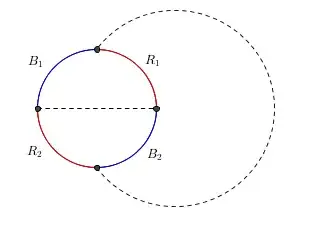I've been thinking over this problem this weekend and although my investigations on it has led to other interesting theorems I am still nowhere close to solving it.
For any set of disjoint unordered pair of points (in $\mathbb{R}^2$), call it $S$, there is a set of simple continuous curves satisfying the following properties:
- The set of end points for each curve is a member of $S$ and vice-versa
- If two curves can intersect, then the intersection must be an end-point of one of the curves
I feel like I was able to give a proof for this when $S$ was countable using mathematical induction. Basically used that fact the plane remains connected when $|S|=1$ and if the plane is connected after adding a number of curves, it is possible to create an extra curve keeps it connected. So by induction if $S$ is countable then the constructed curves satisfy the given properties. I've never used mathematical induction in this manner so I'm not sure if this is a valid proof.
Anyway, I can not think of a way to go about proving or giving a counterexample for an uncountable $S$. I'm stuck even when I let $S$ be the closed unit square (with interior) which I suspect fails the conjecture. What if $S$ is nowhere dense? Will that always satisfy the conjecture?
